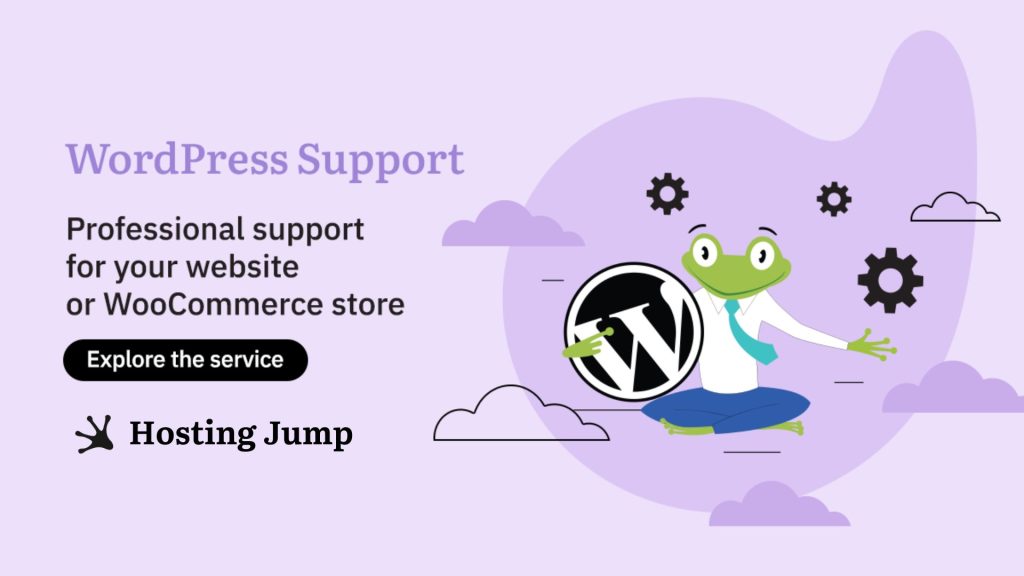Uninstalling WordPress from cPanel can be a challenge, especially if you are new to website management. However, with the right instructions, the process is simple and straightforward.
In this article, we will introduce you to the necessary steps and knowledge to uninstall WordPress safely.

Understanding WordPress in a cPanel Environment
WordPress is a widely used CMS (content management system) that, in combination with cPanel, provides a stable and user-friendly website management environment.
cPanel is a popular web hosting control panel that facilitates the management of websites. Users choose to combine WordPress with cPanel because it enables the management of files, databases, and other important aspects of website administration with a wide range of tools and features.
Removing WordPress From cPanel: Pre-Uninstallation Preparations
Before you start uninstalling, you should make a clear decision and consider the consequences, such as data loss and the loss of your website content.
Here are our recommendations that you should consider before proceeding with the uninstallation of WordPress:
Create a Backup
Creating a backup is an important step before uninstalling WordPress. This will ensure that you have a copy of your website’s data in case it needs to be restored later. Follow these steps to create a backup:
1. Access your WordPress admin panel.
2. In the Plugins section, select a backup plugin such as UpdraftPlus or BackWPup. If you don't already have it, install it.
3. Define your backup settings, e.g. storage location and more.
4. Start the backup process and wait for it to complete.
5. Once the backup is created, download it to your local computer to save it or place it in the root directory of your hosting account.
With a backup, you can restore your WordPress site if something goes wrong during uninstallation. For more information, check out our guide on how to use the backup manager in your hosting account.
Create a 301 Redirect
If you are going to migrate your website to a different domain name after uninstalling WordPress, creating 301 redirects is a must. They guide visitors and search engines to the new location of your site. This is an automatic action that serves to maintain a high SEO score and a positive user experience.
Here’s what you need to do:
- Access your website's .htaccess file or the appropriate configuration file for your server.
- Add the following code to the file: Redirect 301 /old-url http://www.new-url.com/new-url
- Replace /old-url with the path of the old URL and http://www.new-url.com/new-url with the new URL.
- Save the changes and upload the file back to your server if needed.
- Test the redirect to ensure it works correctly by visiting the old URL.
How to Uninstall WordPress from cPanel Manually: Step-by-Step Guide
Whenever you need to uninstall WordPress from cPanel, follow these easy steps:
1. Accessing the cPanel dashboard and locating WordPress files
Log in to your cPanel account. Use the username and password you received in your email upon registration with Hostingjump.com.
You can also access cPanel from your customer profile > Login > Services > My Services > Select the service where the WordPress installation is located > log in to cPanel
2. In the cPanel dashboard, locate the “File Manager” menu and click on it.
3. In the File Manager, find the directory where WordPress is installed. It is usually located in the public_html folder, but it can also be located in a subdirectory outside the public_html folder.
2. Verify the correct database and associated user
1. Go to the “MySQL databases” section in the cPanel.
2. Search for the database for your WordPress installation. The name of the database is usually specified in the wp-config.php file, which is located in the root directory of the installation - for example, /home/cpanel-username/public_html/wp-config.bg.
3. Make a note of the database users associated with this database. It is desirable that you know these.
3. Delete WordPress files and directories from the cPanel
1. In the File Manager, enter the website directory and select all web files and directories.
2. Click on the “Delete” button to remove WordPress files and directories from cPanel.
3. Make sure the files are deleted, and check the recycle bin in File Manager to remove them permanently.
Identifying and deleting databases related to WordPress
1. Go back to the “MySQL databases” section in cPanel.
2. Locate the previously identified database and click on the “Delete” button next to the database.
3. Confirm the deletion of the database to ensure that all WordPress data has been removed.
Ensuring complete removal of database users and privileges
1. In the “MySQL Databases” section, locate the database users associated with the deleted database.
2. Click the “Delete” button next to each user to remove them.
3. Make sure that the deleted database no longer has any user rights assigned to it.
By following these steps, you can effectively uninstall WordPress from cPanel.
Why You Might Need to Uninstall WordPress From cPanel?
There are several possible reasons for uninstalling WordPress from cPanel, such as:
- Change of website platform or content management system.
- Troubleshooting an existing WordPress installation.
- Ensuring data security and cleanliness in cPanel.
- Avoiding website performance issues.
- Switching to a different hosting provider or package.
Looking for a New WordPress Hosting Provider? Jump Is the Perfect Match!
If you are looking for a reliable and efficient WordPress hosting provider, Jump offers excellent solutions tailored to your needs. When you choose Jump, you benefit from:
- Fast and secure hosting services with the most advanced technologies.
- 24/7 customer support to help you with any issues.
- Easy WordPress installation and management.
- Competitive prices and flexible plans.
Conclusion
Always create a backup before making major changes to your WordPress website to avoid losing important written content and media files. With this guide, you can ensure a smooth and safe uninstallation.
If you are experiencing difficulties with WordPress and prefer to focus on the business side of your project, take a look at our service - WordPress Support. Our team of experts with extensive experience will take care of the optimal functioning of your website.

FAQ
Is it necessary to delete everything when uninstalling your old WordPress site?
Yes, if you want to completely remove your old WordPress site, it is important to delete everything, including the wp-content folder, database, and related files. This ensures that there are no remnants that could interfere with your new installation.
Can I use Google Drive to back up my WordPress files?
Yes, you can use Google Drive to back up your WordPress files. You can either manually upload the backup file from your wp-content folder to Google Drive or use a WordPress plugin that integrates with Google Drive for automated backups.
Do I need any technical knowledge to uninstall and reinstall WordPress using cPanel?
While some basic understanding of cPanel is helpful, you do not need extensive technical knowledge to uninstall or reinstall WordPress. The graphical interface of cPanel makes it relatively straightforward to find the options you need, including the Softaculous installer for reinstallation.

